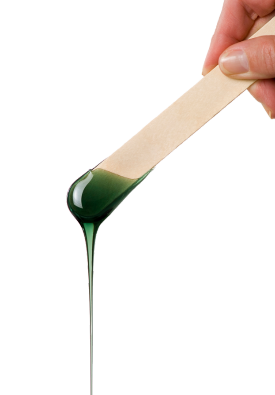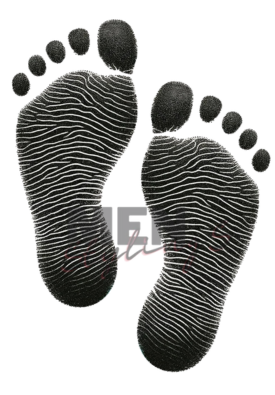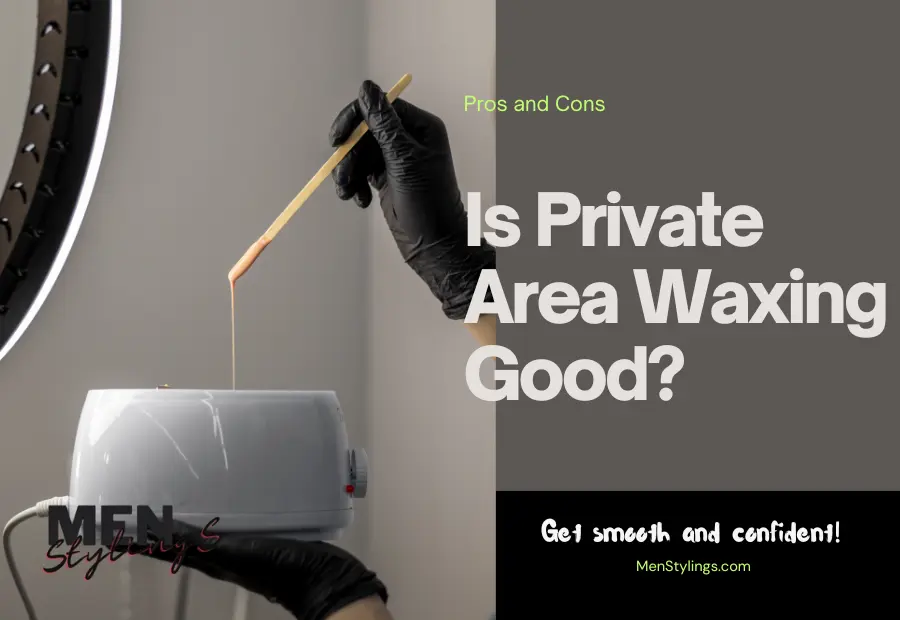Are you thinking about getting waxed but aren’t sure if it’s a good idea? Here’s a little information about private area waxing to help you decide.
Embarking on an exploration of private area waxing, a topic that has garnered significant attention for its intimate nature and the allure of smooth skin, we delve into the complexities and simplicity of this ancient beauty ritual. Our journey through the article is designed to inform and illuminate the nuanced spectrum of benefits and potential setbacks, empowering our readers to navigate the decision-making process with confidence and insight.
Introduction to the Private Area Waxing
At first glance, private area waxing might seem like a modern beauty trend. Yet, its roots stretch back through history, intertwining with the evolving human desire for personal grooming and aesthetics. This procedure, aimed at removing unwanted hair from the most sensitive regions of the body, employs various methods, each with its unique approach and outcome.
Our discussion aims to unwrap the layers of this practice, revealing its impact on the skin’s texture, the hair’s growth cycle, and the individual’s comfort and confidence.
The Benefits of Private Area Waxing: A Closer Look
Smoothness and Hygiene:
Diving deeper, we understand that waxing does more than remove hair. It exfoliates, removing dead skin cells and leaving behind a surface that is not only smooth to the touch but also more receptive to moisturizers and treatments. This smoothness can enhance a sense of cleanliness and hygiene because it reduces the surface area where bacteria can adhere.
Durability of Results/ Slower Hair Regrowth:
In the realm of hair removal, waxing stands out for its ability to slow the clock. Once removed from its roots, the hair takes time to reemerge, granting individuals weeks of freedom from daily hair removal rituals.
Moreover, regular waxing can lead to finer and sparser hair regrowth over time. This is because waxing can weaken the hair follicles, making the hair that does grow back less coarse.
The Transformation of Hair Texture:
An unexpected but welcome consequence of regular waxing is the alteration in hair regrowth. Each session can lead to hair that is noticeably less coarse, a subtle shift that can transform the skin’s overall feel.
A Reduction in Skin Complaints/ Skin Irritation:
Despite the potential for discomfort, many find that the long-term benefits include a notable decrease in irritation and ingrown hairs, especially when compared to the aftermath of shaving.
The Drawbacks of Private Area Waxing
Pain and discomfort:
One of the most significant drawbacks of waxing is the pain associated with removing hair from sensitive areas. The level of discomfort varies from person to person and can decrease with regular waxing as the hair becomes finer.
Risk of infection:
If not done correctly, waxing can lead to skin irritation and, in some cases, infection. It is ensuring that a professional carry out the procedure in a clean environment can mitigate this risk.
Evaluating the Expense:
When weighing the options, the financial aspect of waxing cannot be overlooked. Its cost, often higher than other methods, requires consideration of one’s budget and the value placed on the results.
Maintenance:
To maintain smoothness, waxing must be done regularly, usually every 4 to 6 weeks. This commitment can be a drawback for those seeking a low-maintenance grooming routine.
Making the Decision: Is Private area Waxing good?

Personally, I don’t think pubic area waxing is that great. However, many think it’s a terrific technique to maintain a clean and smooth pubic area. So, if you’re undecided about whether or not to get private area waxing done, I recommend reading some reviews first. Choose after that based on what you think is best for you.
Deciding whether private area waxing is right for you depends on personal preferences, pain tolerance, and lifestyle. If you’re considering waxing for the first time, here are three things to consider before deciding whether or not private area waxing is right for you:
- Start by consulting with a professional: A consultation can provide personalized advice and help alleviate concerns.
- If you have sensitive skin, Wax can actually trigger an allergic reaction.
- Test a Small Area First: Before waxing a larger area, test a small section of skin to see how it reacts.
Preparing for the Procedure
Embarking for a private area waxing procedure involves several steps to ensure a smooth, less painful experience and to help prevent skin irritation. These preparatory steps are pivotal from ensuring the optimal hair length for effective removal to adopting a skin care regimen that facilitates healing and comfort post-wax.
Here’s a concise guide to get you ready:
- Length Check: Ensure your hair is at least ¼ inch long, about the size of a grain of rice. If it’s too short, the Wax won’t grip well. If it’s too long, consider trimming it slightly to reduce discomfort.
- Skin Preparation: Exfoliate the area gently 24 to 48 hours before your appointment to remove dead skin cells and help prevent ingrown hairs. Avoid exfoliating the day of your waxing to prevent irritation.
- Cleanliness: Shower before your appointment to ensure the area is clean. This not only aids in hygiene but can also make the waxing process less painful and more effective.
- Comfortable Clothing: Wear loose, comfortable clothing to your appointment to avoid friction and irritation after the waxing.
- Pain Management: Consider taking an over-the-counter pain reliever about 30 minutes before your appointment to help reduce discomfort.
- Avoid Certain Substances: Skip caffeine and alcohol before your waxing session, as they can make your skin more sensitive.
- Skin Check: Ensure your skin is healthy and irritation-free. Postpone your appointment if you have cuts, sunburns, or rashes.
- Aftercare: Follow your esthetician’s aftercare advice closely. This often includes avoiding hot baths, swimming, and excessive sweating for the first 24-48 hours to prevent irritation and ingrown hairs.
These steps can ensure a more comfortable and practical waxing experience, minimize discomfort, and promote better results.
Who Might Step Back

Not everyone is a candidate for waxing. Individuals with certain skin conditions, sensitivities, or health concerns may need to seek alternatives, a decision best made in consultation with a medical professional.
Alternatives to Waxing
For those to whom waxing is not suited, there are alternatives. The landscape of hair removal offers other territories to explore. From the precision of shaving to the lasting effects of laser treatments, each alternative carries its own advantages and considerations.
Shaving:
It offers a quick and inexpensive option but requires more frequent maintenance. You can read our another article to know how to shave private area.
Laser Hair Removal:
It provides a more permanent solution but comes with a higher initial cost and the need for multiple sessions.
Depilatory Creams:
These can be used for hair removal but may irritate sensitive areas. However, if you can follow the instruction how to use depilatory cream to remove pubic hair, you can overcome from it’s cons.
You may choose our other article for way to remove men’s private area hair at home given below-
FINAL THOUGHT: An Individual Journey
As our conversation ends, the key points of our investigation into private area waxing come to light: the decision is very personal and is impacted by several variables, such as the desired maintenance level, money, and pain threshold. Weighing the pros and downsides and considering other options can help one make an informed decision that fits one’s lifestyle and comfort level.
Regardless of your chosen technique, the most crucial component of any grooming regimen is feeling good about yourself and confident in your skin. It’s a choice that affects one’s comfort level, aesthetic preferences, and way of life.
FAQ:
How do you wax private areas at home?
We suggest you read our other article about how to wax your private area at home.
Which Types of Waxing is Good for Private Areas?
Hard Wax and sugaring are both excellent choices for waxing private areas, each suited to different needs and preferences.
Hard Wax is ideal for its strong grip on coarse hair without sticking to the skin, minimizing irritation and pain, making it perfect for sensitive areas. However, it may come at a higher cost and require careful temperature management.
On the other hand, sugaring, known for its natural ingredients and lower application temperature, offers a gentler alternative, especially for those with sensitive skin. It’s easy to clean up but might not be as effective on very coarse hair.
Both methods balance benefits and drawbacks, allowing for personalized hair removal choices.
Can you recommend the best Wax to use in private areas?
Yes, I have some suggestions!
Hard Wax:
Sugar wax
- Moom Organic Hair Removal with Tea Tree Oil
- Sugaring NYC Best Hair Removal – 100% Natural
- VidaSleek Extra Strength Hair Removal Sugaring Kit
How I picked up the product as the best: Considering their popularity, glowing customer feedback, and compatibility with sensitive skin, we presented the above three leading hard Wax and three sugar wax products highly favored across the USA market. Hope you will be helped.
What should you consider before deciding to wax your pubic area?
Without a doubt, waxing may help maintain your skin smooth and clean. However, there are a few things to consider before getting started. First, ensure you have the appropriate tools for the job before anything else. You’ll need a quality wax, an applicator cloth, and warm water. Second, become conscious of your skin’s sensitivity. When waxing for the first time, begin with tiny areas and work your way up.
